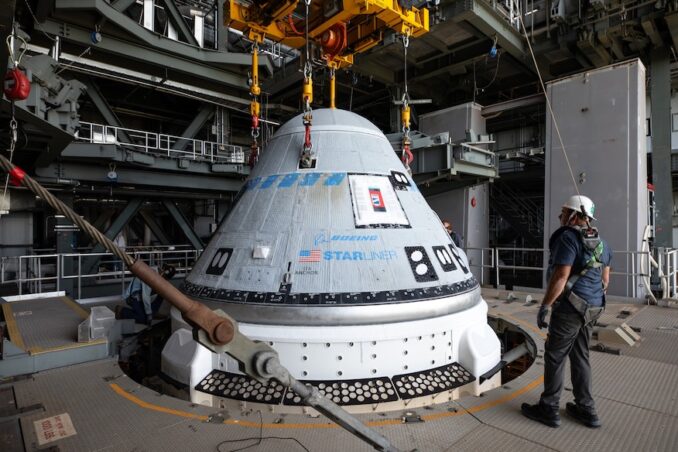LARAMIE, Wyo. (Nov. 24, 2025) – The Wyoming Cowboys head to Hawai’i to face the Rainbow Warriors for the Paniolo Trophy on Saturday evening at the T.C. Ching Athletic Complex. The contest is slated for an 9 p.m. MT start.
Where to…

LARAMIE, Wyo. (Nov. 24, 2025) – The Wyoming Cowboys head to Hawai’i to face the Rainbow Warriors for the Paniolo Trophy on Saturday evening at the T.C. Ching Athletic Complex. The contest is slated for an 9 p.m. MT start.
Where to…

In its latest shakeup to the…

Travis Scott‘s recently wrapped Circus Maximus World Tour broke global records. The 85-stop tour across the globe became the highest-grossing solo rap tour in history after grossing $250 million and selling more than 2.2 million tickets in…

Scientists have engineered a fungus that turns the same amount of feedstock into significantly more edible protein – and does so with far fewer emissions.
In new research from Jiangnan University in Wuxi, China, a gene-edited strain of Fusarium…

Traders work on the floor of American Stock Exchange (AMEX) at the New York Stock Exchange (NYSE) in New York, US, on Monday, Nov. 24, 2025.
Michael Nagle | Bloomberg | Getty Images
Stock futures are little changed Monday night after major U.S. averages rebounded, driven by strength in the artificial intelligence trade and renewed hopes of a Federal Reserve interest rate cut.
Futures tied to the Dow Jones Industrial Average added 4 points, or less than 0.1%. S&P futures rose nearly 0.1%, while Nasdaq 100 futures rose more than 0.1%.
Stocks posted strong gains across the board on Monday, starting a shortened trading week off strong. The S&P 500 in the previous session gained almost 1.6%. The Nasdaq Composite jumped 2.7% and recorded its best day since May 12 as major tech names rebounded after what’s been a tough month for the sector. The Dow Jones Industrial Average closed higher by nearly 203 points, or 0.4%, meanwhile.
Google parent Alphabet was the outperformer of the “Magnificent Seven” group by a large margin, ending the day 6.3% higher. Chipmaker Broadcom was the S&P 500’s biggest gainer after the stock surged more than 11%. Investors have rallied behind both companies, which are related through their high-performance, application-specific chips, or ASICs, businesses. Nvidia — which has lost about 10% this month even after reassuring investors about strong AI demand — gained about 2%.
Although stocks attempted a slight recovery from the sell-off from the previous week, the three U.S. indexes are still tracking for a losing month. AI stocks have been responsible for much of this year’s gains, and investors are questioning tech stock valuations and whether the market will see a year-end rally or a reversal in momentum.
The S&P 500 is down about 2% in November, while the Nasdaq has lost 3.6%. The 30-stock Dow has shed 2.3% month to date.
“You saw a lot of that washout, and it really started at the end of October as we had some liquidity that came out of out of the market,” Abby Yoder, U.S. equity strategist at JPMorgan Private Bank, said Monday on CNBC’s “Closing Bell” referring to the recent pullback.
“But within this technical-driven move in terms of the AI and tech-related names, you still had this really solid fundamental backdrop in terms of the AI story and the AI spending story,” Yoder continued. “Now, I think going forward, it sets up nicely as we head into the end of the year, but I think there’s going to be a little bit more of a discerning eye.”
Separately, traders continue to watch for any news that can affect the Federal Reserve’s upcoming monetary policy decision. Markets are pricing in a more than 80% chance of a quarter percentage point cut from the Fed in December, per the CME FedWatch Tool. The probability has soared since New York Fed President John Williams said on Friday that there was room to lower rates “in the near term.” San Francisco Fed President Mary Daly told the Wall Street Journal on Monday that she supports lowering rates due to labor market concerns.
The stock market is closed on Thursday for Thanksgiving Day, and it shuts down early at 1 p.m. ET on Friday.

President Donald Trump has said he agreed to visit Beijing in April and invited Chinese President Xi Jinping for a state visit later next year, following a phone call between the two leaders.
Trump and Xi – who met nearly a month ago in South…

Production on the third season of Netflix‘s One Piece is underway in South Africa, as the streamer reveals returning cast and four promotions.
The returning Straw Hat crew includes Iñaki Godoy as Monkey D. Luffy), Mackenyu…

Your last chance to see a supermoon in 2025 is approaching quickly. December’s full moon is scheduled to appear on Dec. 4, exactly one week after Thanksgiving. Even if you don’t make plans to see it, you’ll probably see it anyway, as it’ll be the…

Once NASA’s Nancy Grace Roman Space Telescope launches in the next 12 to 18 months, it will be on its way toward outdoing scientists’ initial expectations. Researchers have confirmed that Roman should be able to measure enormous seismic waves…